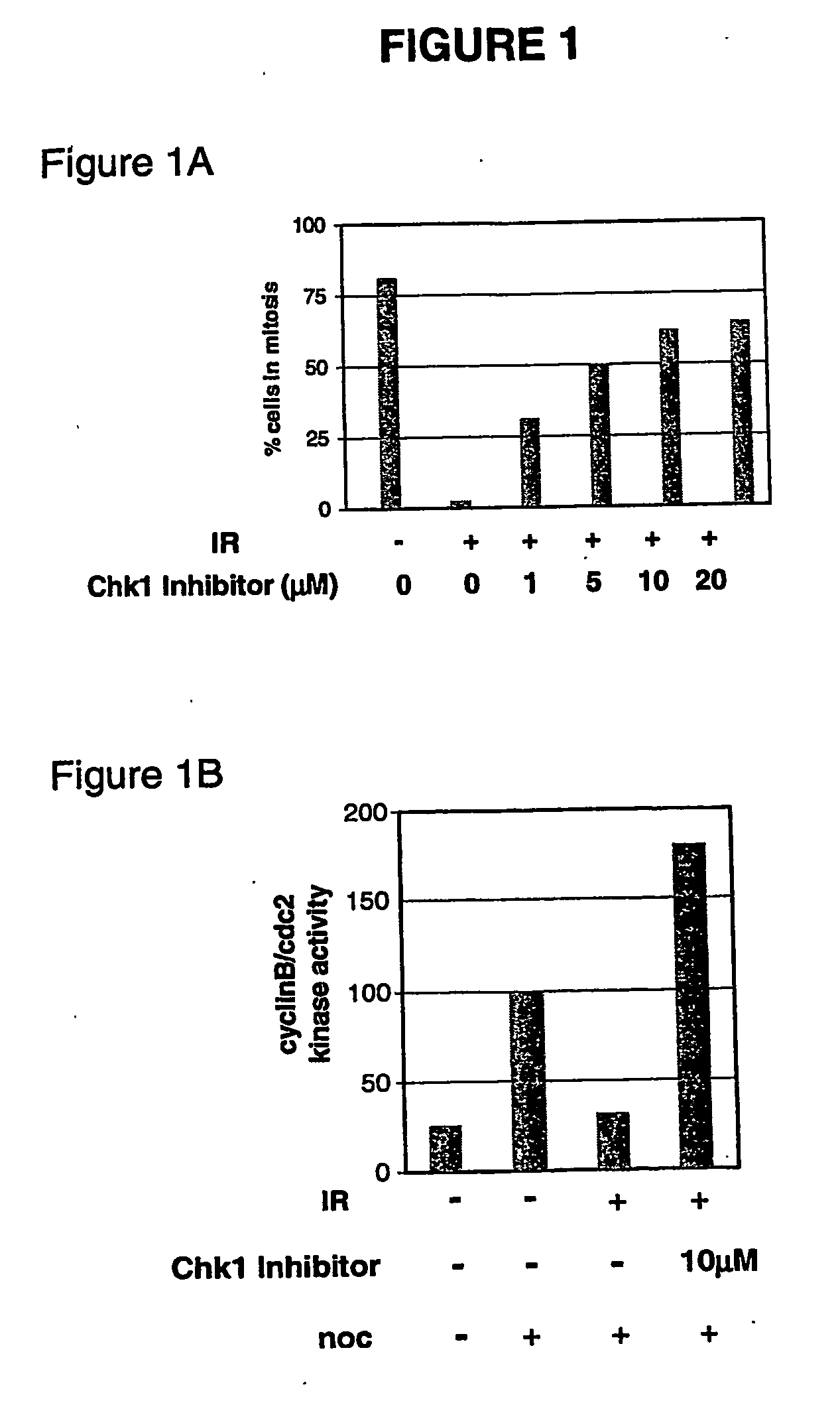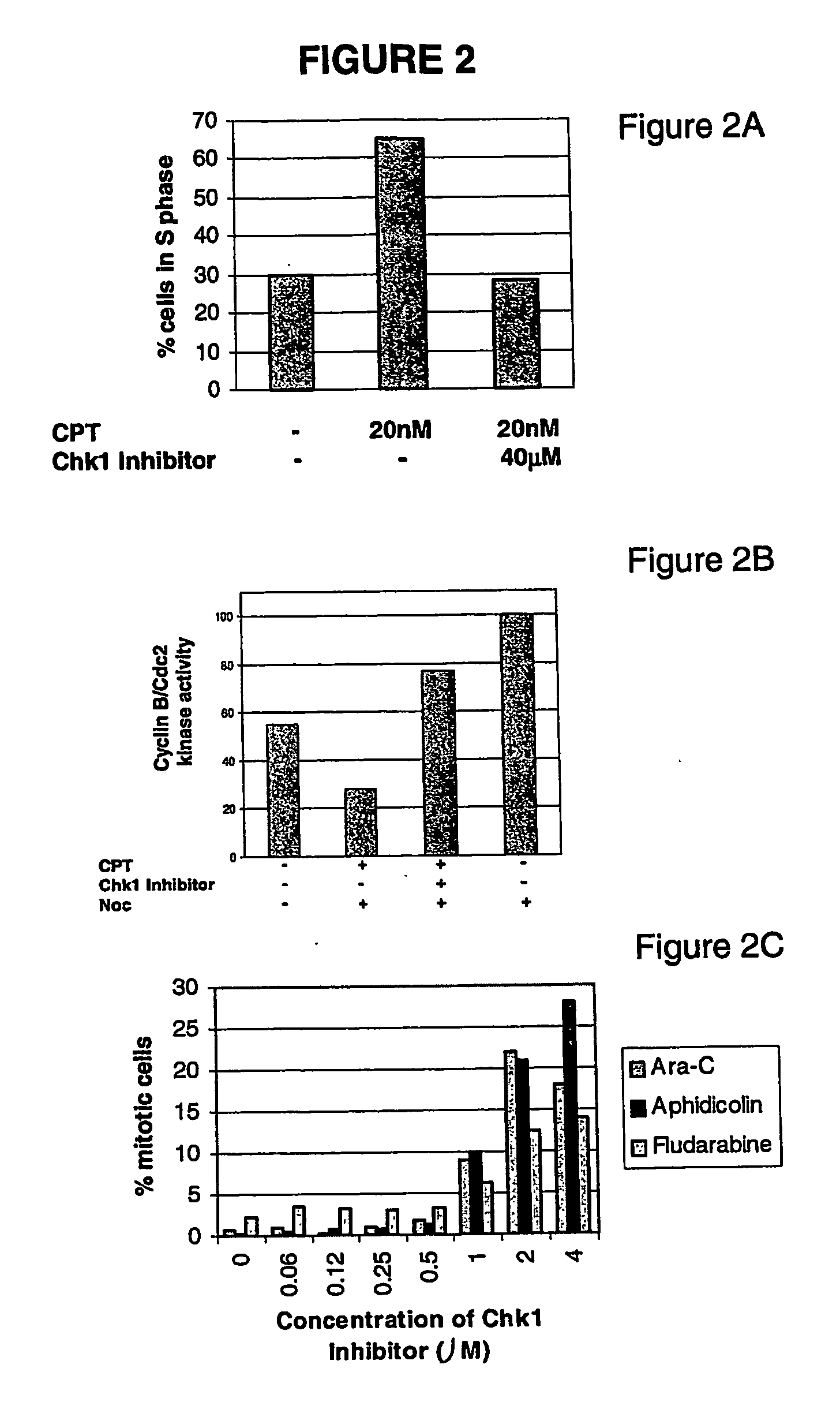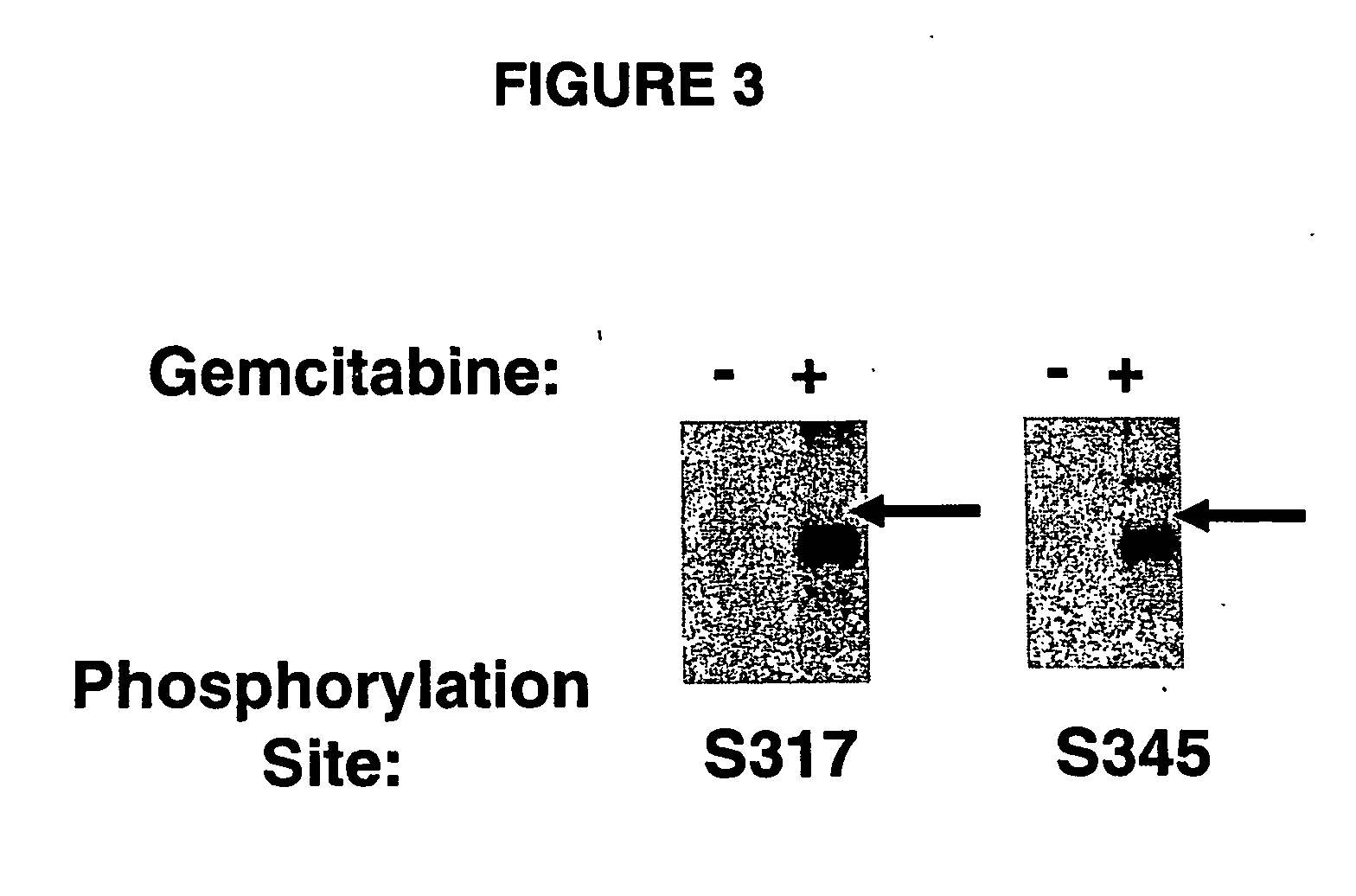Use of chk1 inhibitors to control cell proliferation
a technology of chk1 inhibitors and cell proliferation, applied in the direction of phosphorous compound active ingredients, drug compositions, immunological disorders, etc., can solve the problems of inducing cell cycle arrest, inability to synthesis, and cell death, and achieve slow or stop the rate at which aberrantly, increase the rate of cell death, and reduce the rate of replication
- Summary
- Abstract
- Description
- Claims
- Application Information
AI Technical Summary
Benefits of technology
Problems solved by technology
Method used
Image
Examples
example 1
Contacting Aberrantly Proliferating Cells with Chk1 Inhibitor After Substantial Cell Cycle Synchronization by Chk1 Activator Showed Better Anti-Proliferative Activity than Co-Administration in a Non-Small Cell Lung Cancer Cancer Animal Model
[0778] A method of the invention provided an improved antiproliferative effect over co-administration in an art-recognized in vitro tumor model. In the experiment, gemcitabine was used as the Chk1 activator and a diaryl urea compound according to Keegan et al., PCT / US02 / 06452, was used as the selective Chk1 inhibitor. (The same Chk1 inhibitor was used in the examples 2-11.) The target phase of gemcitabine is the S phase of the cell cycle. A non-small cell lung tumor xenograft tumor model, H460, was the art-recognized in vitro tumor model.
[0779] Nude mice were engrafted with H460 tumor cells and allowed to grow to an average of 75 mm3. Tumor-bearing mice were then treated with vehicle, gemcitabine or gemcitabine plus 400 mg / kg selective Chk1 inh...
example 2
Contacting Aberrantly Proliferating Cells with Chk1 Inhibitor after Substantial Cell Cycle Synchronization by Chk1 Activator Reduced Required Exposure Time To Chk1 Inhibitors in a Mitotic Index Assay
[0781] Chk1 inhibitors were tested in a cell-based proliferation assay for the ability to sensitize tumor cells to ionizing radiation or chemotherapy agents. Chk1 inhibitors were tested in combination with 5-FU, gemicitabine, ionizing radiation, camptothecin, etoposide, hydroxyurea, cisplatin, fludarabine, Ara-C and aphidicolin. For each experiment, a serial dilution of each compound in combination with a ten-point dilution of each chemotherapy agent was included, in order to determine the concentration of chemotherapeutic required to inhibit the growth of 90% (GI90) of the cells in the presence and absence of the Chk1 inhibitor. This ratio of GI90 in the absence of Chk1 inhibitor to that in the presence of Chk1 inhibitor is called the “fold sensitization.” Fold sensitization was plotte...
example 3
Contacting Aberrantly Proliferating Cells with Chk1 Inhibitor after Substantial Cell Cycle Synchronization by Chk1 Activator Showed Better Anti-Proliferative Activity than Co-Administration in a Colon Cancer Animal Model
[0783] Nude mice were engrafted with HT29 colon carcinoma cells and tumors were grown to 200 mm3 for 10 days. The HT-29 tumor-bearing mice were treated with vehicle, 600 mg / kg Chk1 inhibitor (p.o.), 160 mg / kg gemcitabine (i.p.) or the co-administration of gemcitabine and Chk1 inhibitor. Alternatively, mice were pretreated according to the invention with gemcitabine for 24 hours, dosed with Chk1 inhibitor on day 2, and allowed to rest on day 3. The treatment regimen was repeated four times. This dosing strategy combined the MTD dosing for gemcitabine (160 mg / kg q3d×4, i.e. 4 doses delivered as one dose per day at 3-day intervals) with a gemcitabine pretreatment strategy.
[0784] Tumors were measured every 2-3 days until they reached 1200 mg and then the animals were s...
PUM
| Property | Measurement | Unit |
|---|---|---|
| time | aaaaa | aaaaa |
| median time | aaaaa | aaaaa |
| thick | aaaaa | aaaaa |
Abstract
Description
Claims
Application Information
 Login to View More
Login to View More - R&D Engineer
- R&D Manager
- IP Professional
- Industry Leading Data Capabilities
- Powerful AI technology
- Patent DNA Extraction
Browse by: Latest US Patents, China's latest patents, Technical Efficacy Thesaurus, Application Domain, Technology Topic, Popular Technical Reports.
© 2024 PatSnap. All rights reserved.Legal|Privacy policy|Modern Slavery Act Transparency Statement|Sitemap|About US| Contact US: help@patsnap.com










